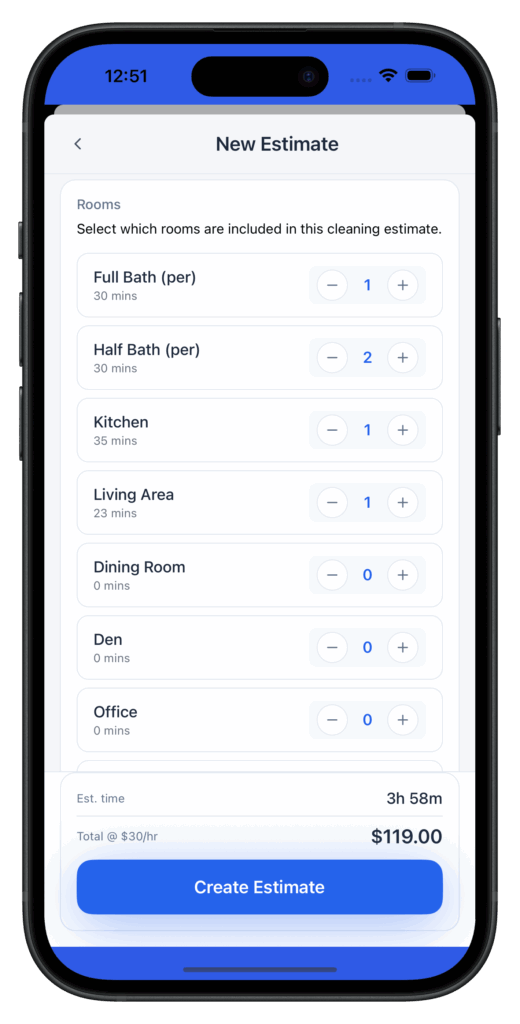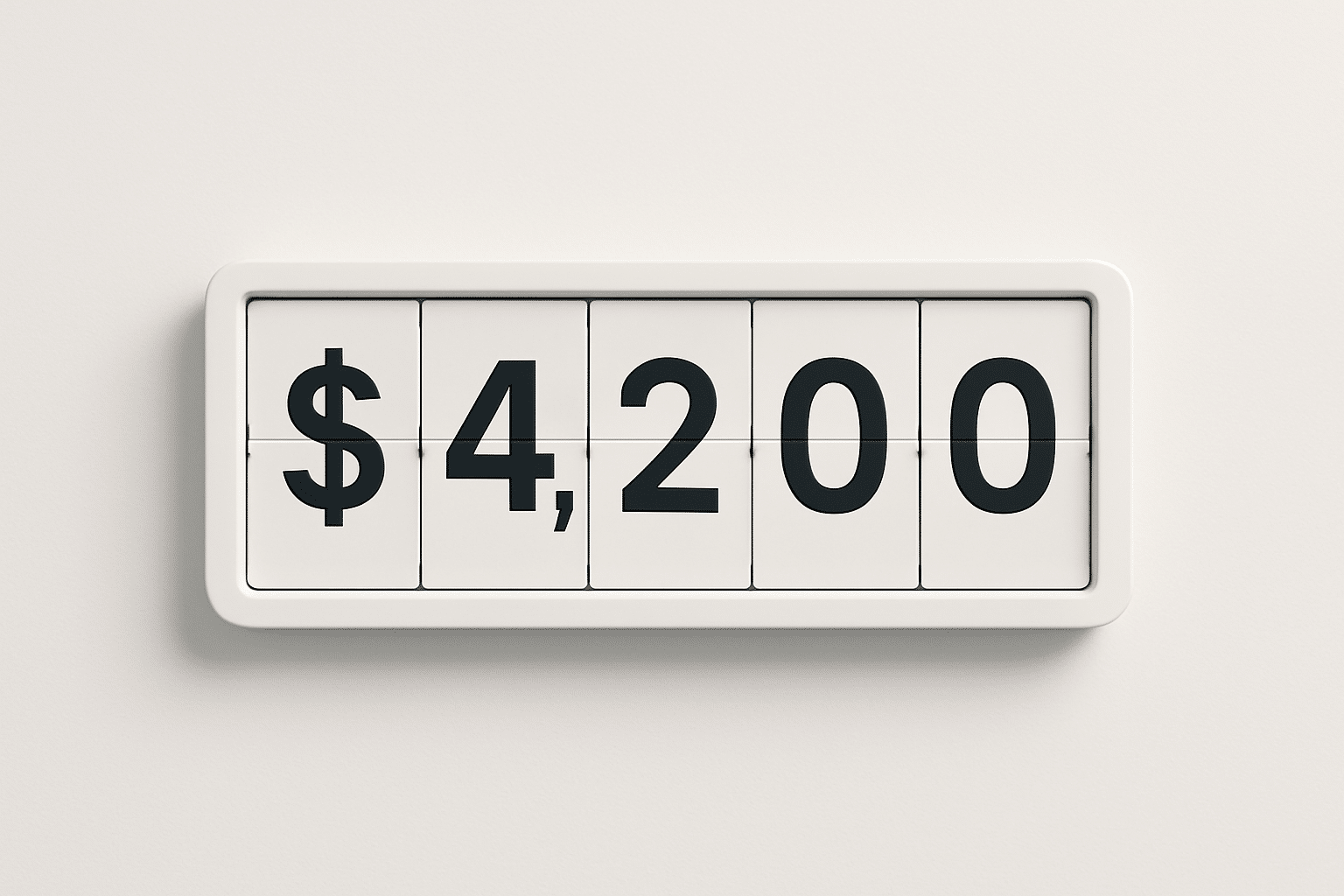The transition from cleaning gigs on evenings and weekends to running a full-time cleaning business isn’t just possible — it’s happening every day. I started alone, scrubbing apartments between jobs, juggling burnout, bills, and big dreams. Today, I lead a small, thriving team and take home a consistent income that once felt out of reach. If you’re serious about going full-time, this guide is your roadmap.
Let’s break it down: practical, proven, and profit-driven.
Step 1: Know Your Freedom Number
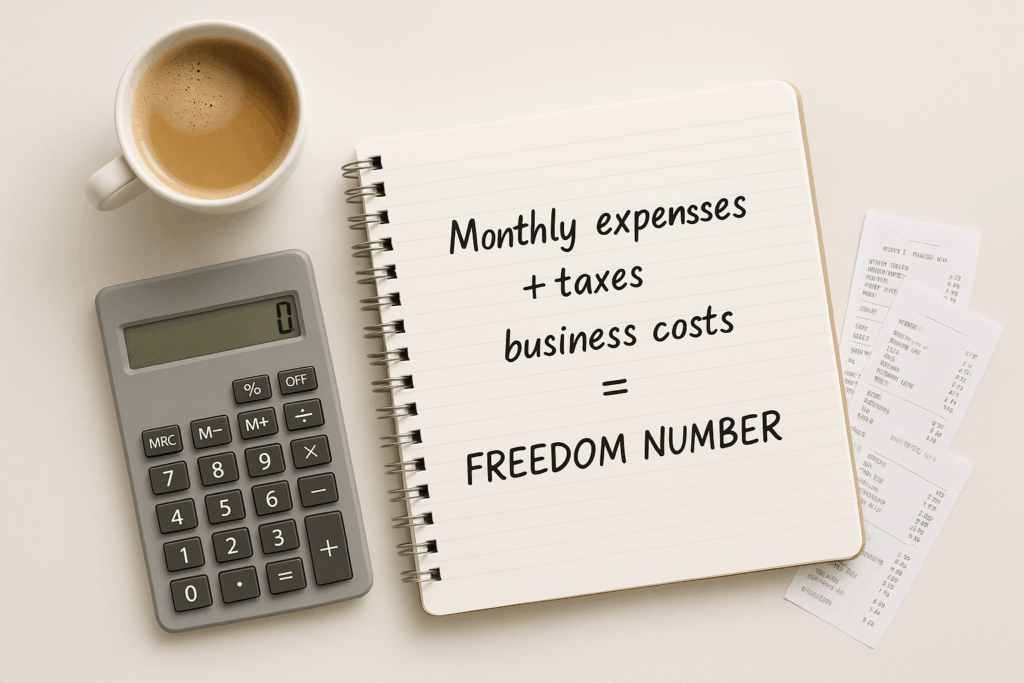
Before quitting your job, you need one number: the amount your cleaning business must earn to fully replace your income and cover business expenses.
Here’s how to calculate it:
- Your monthly personal expenses (rent, food, bills)
- Add taxes (20-25%)
- Add monthly business costs (supplies, gas, software, insurance)
Example: If you need $3,000/month to survive, plan for at least $4,200/month in cleaning income. That’s your Freedom Number.
According to ZipRecruiter (2025), the average solo residential cleaner in the U.S. makes between $25–40/hour. If you average $30/hour, you need to bill 140 hours/month to meet that target — about 35 hours/week.
Step 2: Get Real About Your Schedule
Many solo cleaners dream of quitting but don’t know how many hours they actually have available.
Use your evenings/weekends as a testing ground:
- Track how many paid hours you clean weekly
- Track how many unpaid hours you spend on admin, driving, estimates, and messaging
- Adjust your hourly rate or route density to reduce unpaid time
This data tells you how close you are to being able to go full-time. If you’re cleaning 20 paid hours/week while working another job, you’re halfway there.
Step 3: Raise Your Rates Now, Not Later
Don’t wait until you go full-time to raise prices. You need higher-paying clients before you quit.
Why? Because:
- Cheap clients won’t sustain your business
- High-value clients allow fewer jobs, more margin
Look at your market and test your pricing. Use the formula:
(Hourly Rate x Time) + Supply Fees + Travel Buffer = Quote
Start nudging it up. You’ll lose some clients — but the right ones stay. And they refer others just like them.
Step 4: Specialize and Stand Out
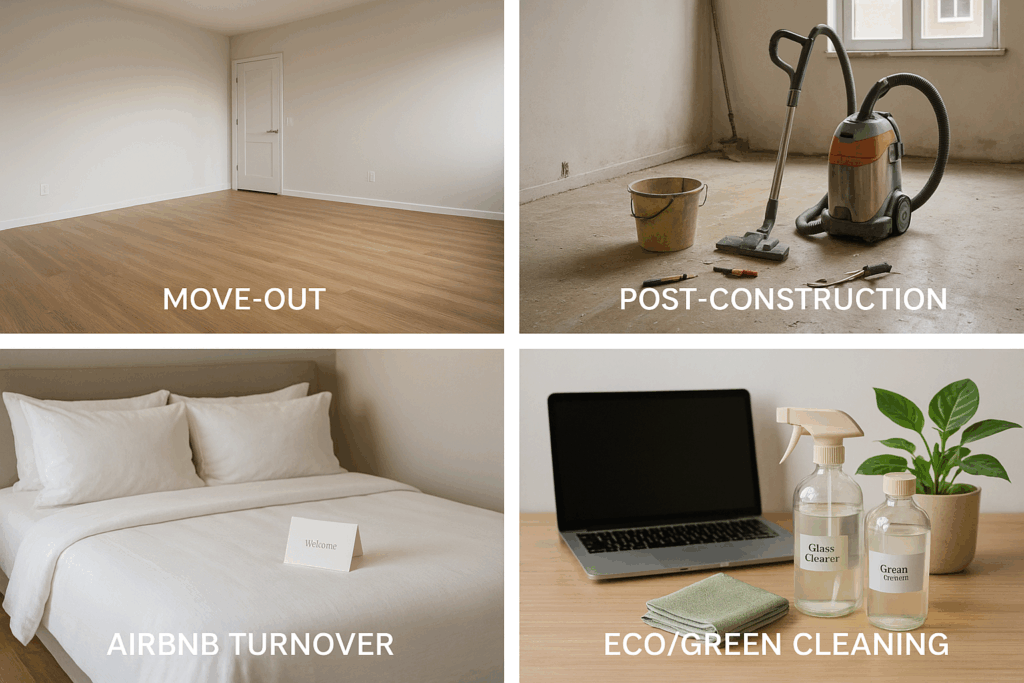
Generic cleaners fight on price. Niche cleaners get hired for value.
Pick a focus:
- Move-out cleanings
- Post-construction cleaning
- Short-term rental turnovers
- Eco-friendly/green cleaning
- Pet-safe services
When you niche down, your marketing becomes sharper, and you attract the right clients. One cleaner on Reddit went from $18/hr to $45/hr simply by specializing in Airbnb turnovers with same-day service.
Step 5: Build Your Booking System Before You’re Booked Out
If your phone is your entire booking system, it’s time to upgrade.
You need:
- A Google Business Profile
- A basic website with a booking form
- A calendar or booking tool (like Calendly, Square, or Google Calendar)
- A basic CRM or spreadsheet to track clients
Why it matters: When you go full-time, losing a lead because you missed a call or forgot to follow up can mean lost rent. Systems protect your revenue.
Step 6: Make Your Marketing Work While You Clean
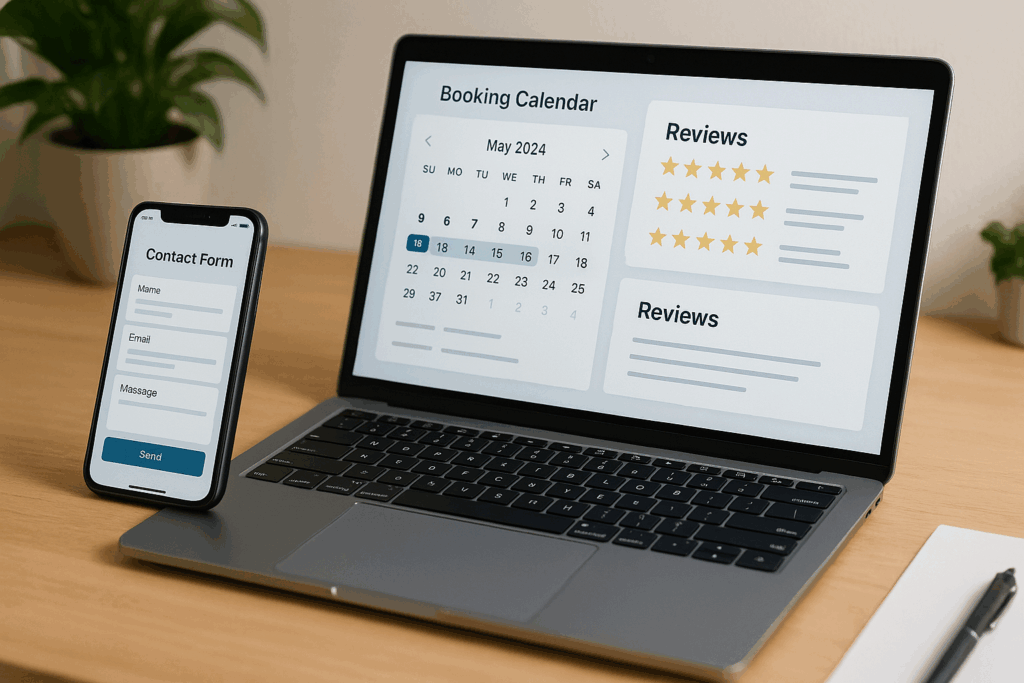
Full-time cleaning doesn’t allow you to manually chase every lead.
Instead, set up marketing that runs without you:
- Google My Business with weekly posts and real reviews
- Automated review requests after each job
- Facebook local groups where you drop helpful tips
- Craigslist + Nextdoor with rotating ads
2024 Data from BrightLocal shows that 87% of consumers read online reviews for local services. Focus here.
Organic visibility = consistent calls. You want clients coming to you.
Step 7: Know When to Let Go of the Day Job
This is the scariest step. You don’t want to jump too early, but staying too long slows growth.
Here’s a safe formula:
- You consistently book 70-80% of the income you need
- You have at least 4-6 weeks of business savings
- You’ve proven demand (referrals, repeat clients, reviews)
- You have a system for finding new clients
Quitting isn’t just about cleaning hours — it’s about confidence in your system. The day job is your last safety net. You’re building the new one as you go.
Step 8: Build a Referral Flywheel
Once you’re full-time, referrals must become your growth engine.
How to build one:
- Offer small loyalty rewards to repeat clients (free fridge clean, $15 off, etc.)
- Ask every happy client for 1 referral
- Print business cards and leave 2-3 at every clean
- Partner with realtors, Airbnb hosts, or property managers
Referrals close faster and are more loyal. A study by Nielsen shows that 92% of consumers trust referrals from people they know over any ad.
Step 9: Treat Your Business Like a Business
When you go full-time, this isn’t just a hustle anymore. It’s your income, your brand, your future.
Act like it:
- Separate your personal and business bank accounts
- Track every dollar (use Wave, QuickBooks, or a spreadsheet)
- Get general liability insurance
- Build weekly routines: marketing, client follow-ups, supply runs
- Take time off (yes, schedule your rest)
The difference between burnout and long-term growth is structure. The goal isn’t just to clean full-time — it’s to do it sustainably, profitably, and proudly.
Final Word
Going full-time with your cleaning business is scary. But it’s also the single most empowering move you can make if you’re tired of working for someone else.
You don’t need 100 clients. You need the right 15 to 25. You don’t need fancy tools. You need systems. And you don’t need to wait for the perfect moment. You need to start now, intentionally.
Let this be your blueprint.
